
Yam Curry Oder TaroWurzelcurry Auf Einem Steinboden Stockfoto Bild von würzig, landwirtschaft
We are going to take a look at 18 of the best taro recipes that you can make. Each one is absolutely delicious and you will find yourself making them again and again! 1. Crispy Taro Fries (Baked, Fried, Or Air Fryer) First on the list, we have these delicious crispy taro fries.

TaroApfelMandelAuflauf Rezept Lebensmittel essen, Essen, Gratin
by Stephen Albert Sharing is caring! Taro, also called dasheen, eddo, or cocoyam, is always eaten cooked. Taro can be steamed, boiled, fried, stir-fried, baked, and braised. It is often added to stews and soups where it absorbs fatty juices and serves as a nutty thickener.
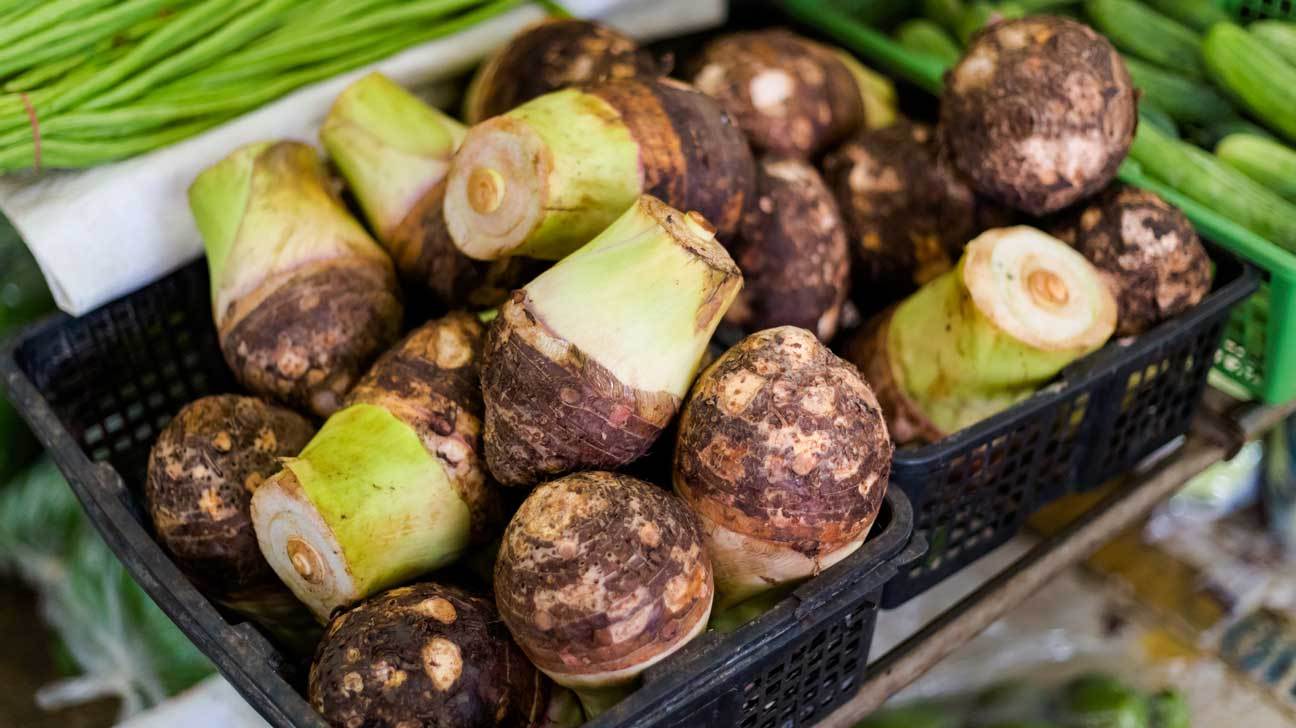
7 überraschende Vorteile der TaroWurzel
Here are some popular ways to serve the taro plant's root vegetables. 1. Poi: This side dish is popular in Hawaii, where cooks simply steam the root and mash it, adding water until smooth. 2. Taro chips: Thinly slice the taro root and bake it in the oven or air fryer for a crunchy alternative to potato chips. 3.

Growing Edible Taro In The Garden Tips On Harvesting Taro Roots
Taro (/ ˈ t ɑːr oʊ, ˈ t ær-/; Colocasia esculenta) is a root vegetable. It is the most widely cultivated species of several plants in the family Araceae that are used as vegetables for their corms, leaves, stems and petioles. Taro corms are a food staple in African, Oceanic, East Asian, Southeast Asian and South Asian cultures (similar to.
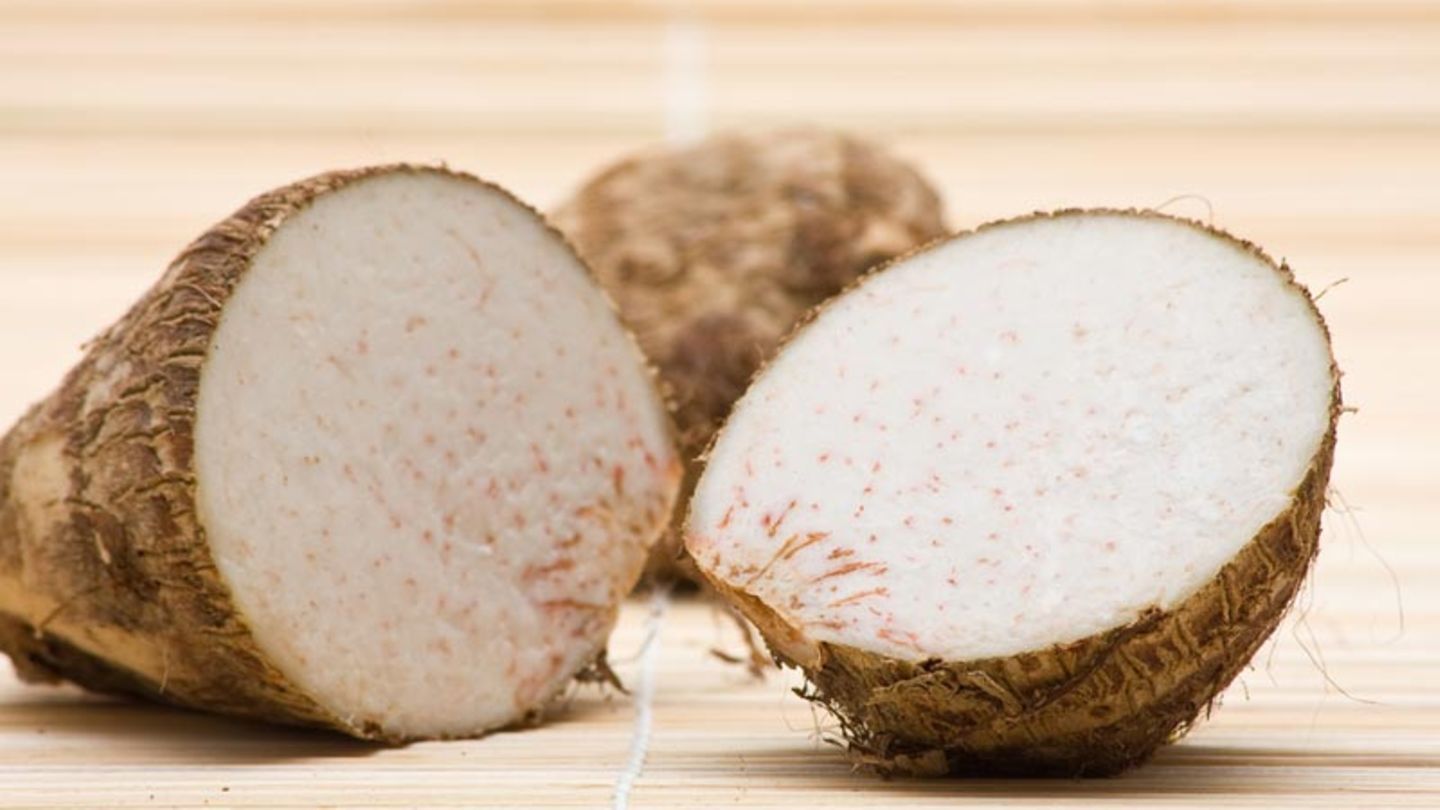
Taro kleine Warenkunde [ESSEN UND TRINKEN]
Vermeide, die Taro-Wurzeln roh zu essen. Roh können Taro-Wurzeln für Menschen giftig sein. Du solltest sie immer durchgaren, um mögliche Nebenwirkungen durch den Verzehr roher Taro-Wurzeln zu vermeiden. [1] Gehe immer auf Nummer sicher und gare die Taro-Wurzeln lieber zu lange, statt zu kurz. 2

Table for 2.... or more Taro Rice
Directions. Boil 6 cups of water in a pot over medium high heat. When the water starts boiling, add the beef and garlic. Cover and cook for 10 minutes. Open and add the peeled taro, fish sauce, and salt. Cover and keep cooking for another 20 minutes. Place a fine strainer into the soup.

Optisch ganz ähnlich unserer heimischen Steckrübe ist die TaroKnolle. Sie ist reich an Stärke
Thinly slice the mushrooms and set aside. Add the rice to a medium bowl, and cover with 2 inches of water. Soak for 15-20 minutes. Drain completely before using it in the recipe. Preheat the wok until it just starts to smoke. Coat with 2 tablespoons of oil. Add the taro, and brown on all sides over medium heat.

Taro & Sticky Rice with Coconut Cream Ang Sarap
Instructions. Add the taro to a pot of boiling water and cook until a knife inserted into the biggest one yields without any resistance. Alternatively, use a pressure cooker. Preheat oven to 200 C (400 F). Soak the taro in a bowl of cold water. Take one out and peel away the outer skin with a knife.
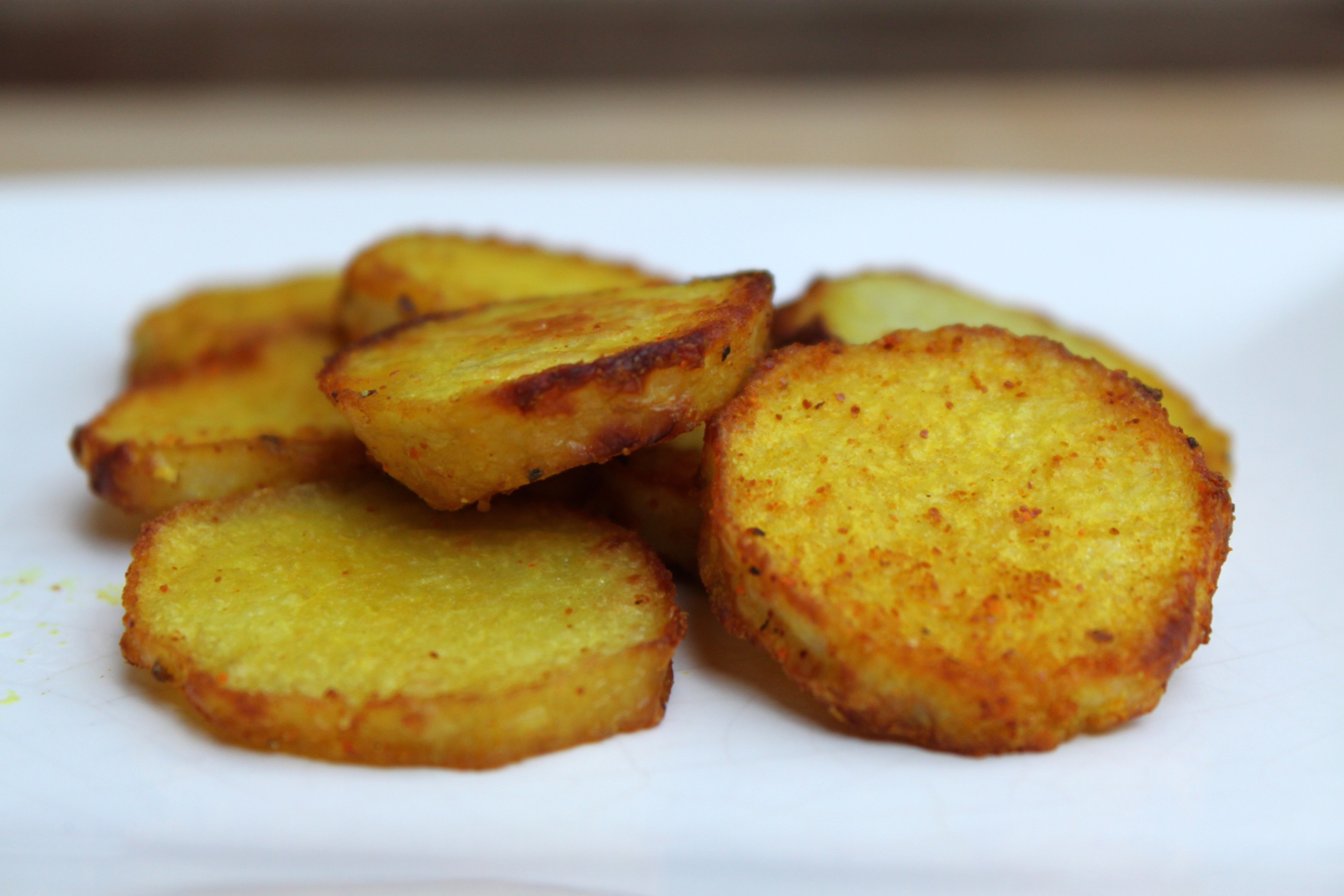
Week 50 Taro Root 52 Kitchen Adventures
Aufgepasst: Sie können die Taro-Knolle nicht roh essen. In dieser Form ist sie nicht nur ungenießbar, sondern auch noch giftig. Dabei wird nicht nur die Knolle der Taro-Pflanze in Vietnam genossen, sondern auch die Blätter. Diese sind ebenfalls roh giftig, können aber wie jedes bekannte Blattgemüse zubereitet werden.

What Does Taro Taste Like? Amazing Facts You Need to Know
Season the shrimp with salt and pepper and set aside. Place a large skillet over medium heat and add in the oil. Once oil heats, add in the garlic and scallions and let cook for 2-3 minutes or until scallions soften. Add in the taro noodles, pour in the miso sauce, toss to combine and then add in the shrimp. Cover the skillet and cook for 3-5.
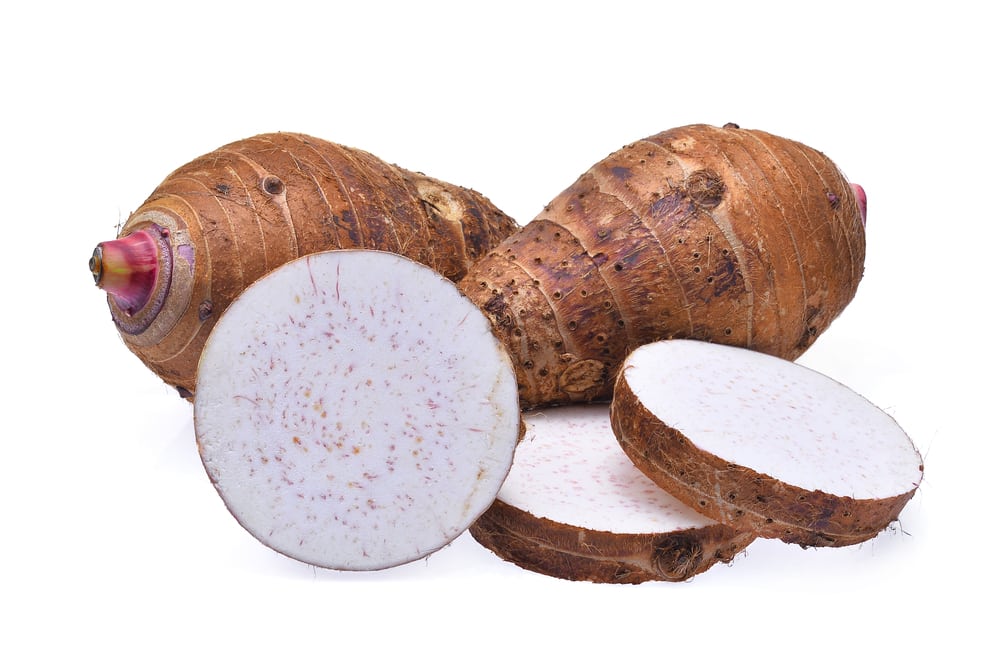
Taro Ein Mix aus Kartoffel und Esskastanie » Vietnamesische Rezepte
Add the sauce to a freezer-friendly storage bag. To make kolkas from frozen taro and frozen cilantro sauce, add the frozen taro to some chicken or duck broth. Boil for 20 minutes or until the taro root has cooked. Add the defrosted green sauce to the taro and broth mixture. Boil on high for another 5 minutes.
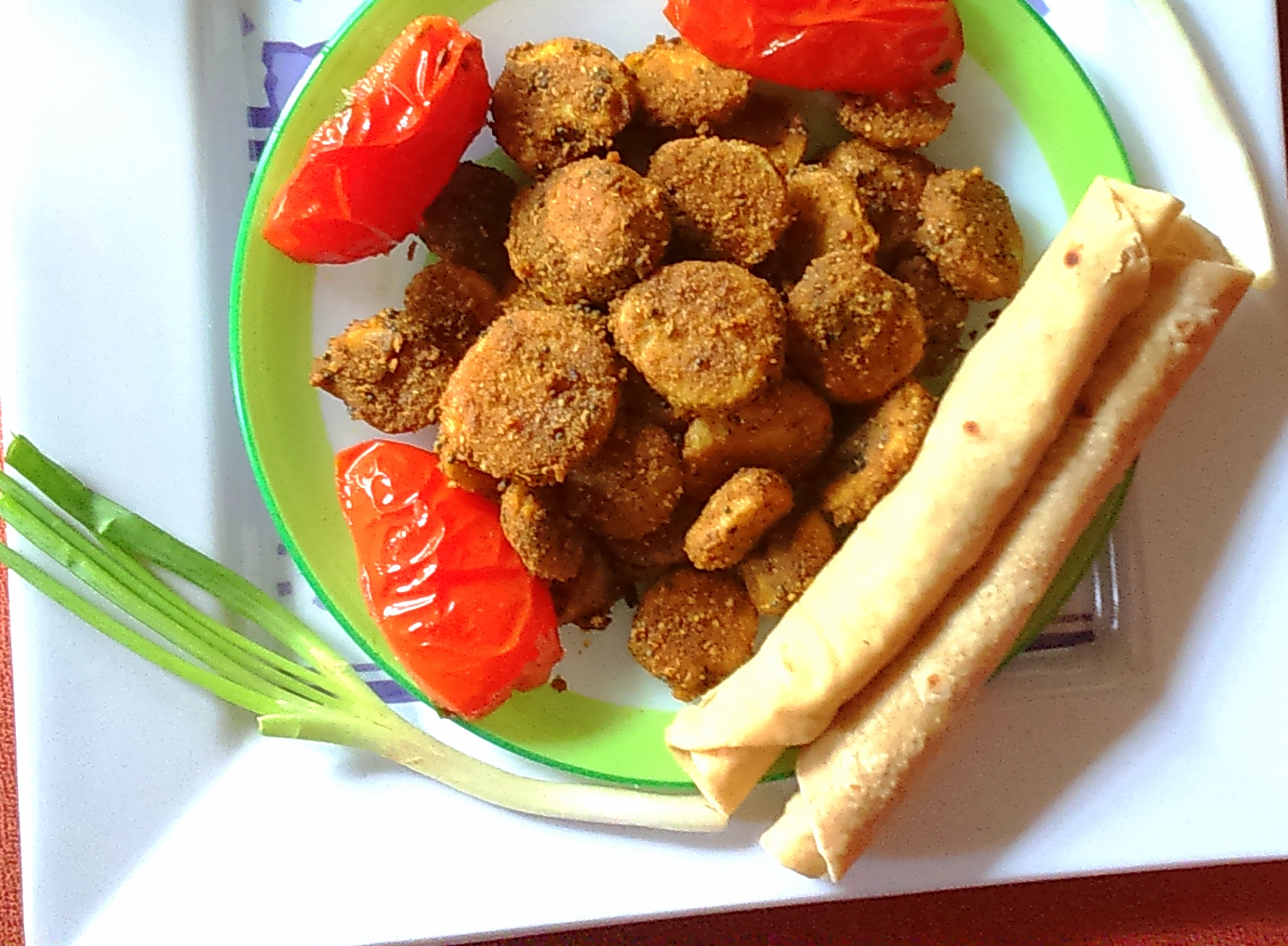
Dry arabi (taro root) with Besan Indian Cooking Manual
© Gary Soup Taro ist reich an Provitamin A und Vitamin C. Allerdings enthält Taro auch schleimhautreizende Kristalle und ist roh ungenießbar. Deshalb sollten Sie ihn vor dem Verzehr zwei Mal mit frischem Wasser abkochen. Dabei lösen sich die Kristalle und gehen ins Wasser über. Generell können Sie Taro ähnlich wie Kartoffeln zubereiten.
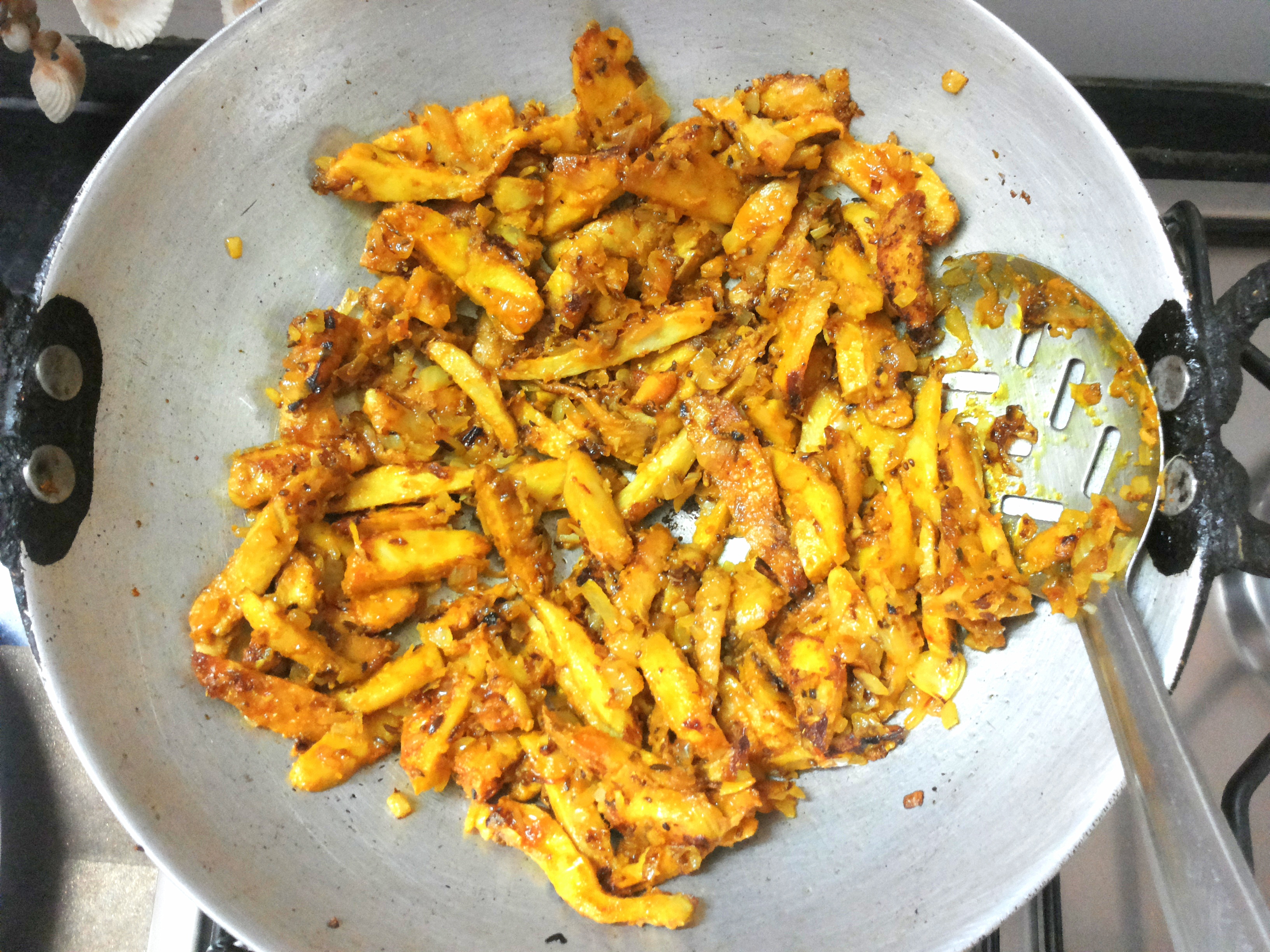
Arabi ka bhujia (taro root fry) Indian Cooking Manual
1. Make taro root mash. Cut 2 lb (0.91 kg) of taro root into 2 in (5.1 cm) pieces. In a mixing bowl, combine the taro root pieces, 2 c (470 mL) of oil, 2 tablespoons (29.6 ml) of minced garlic, and salt or pepper to taste. Mix the ingredients together thoroughly. Spread the root mixture on a lightly-oiled baking sheet.
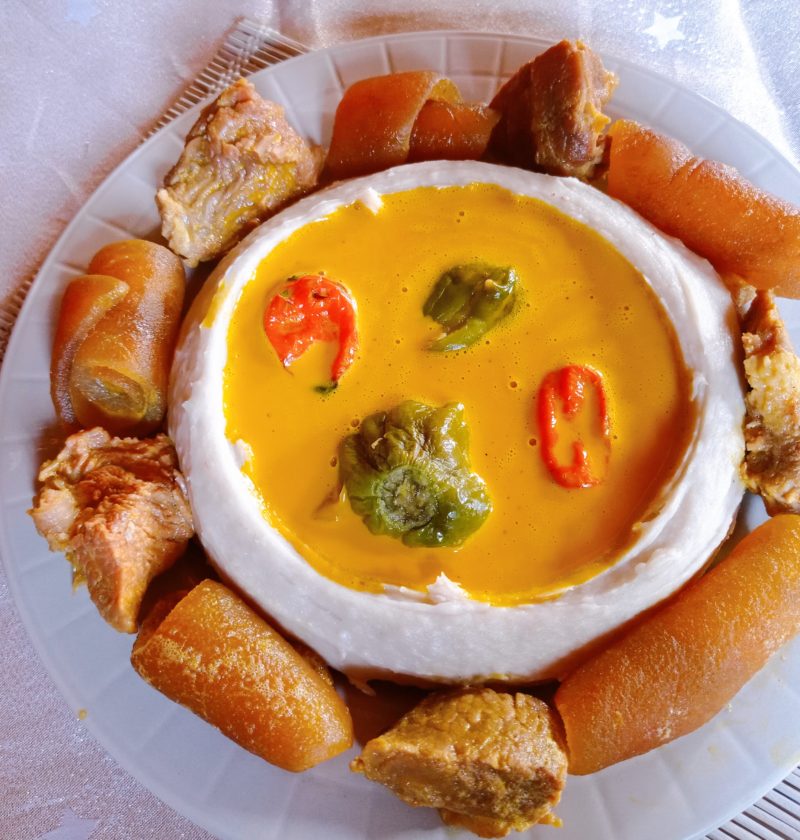
Taro sauce jaune Achu soup Yellow soup Camerdish
According to The New York Times Style Magazine, in Hawaii, specifically, natives thrived on up to 15 pounds of poi — a traditional Hawaiian dish made from taro.But although the root vegetable.

Essen Samoa Kinderweltreise
Taro is rich in nutrients that can provide important health benefits. A one-cup serving has a third of your daily recommended intake of manganese, which contributes to good metabolism, bone health.

Fried Taro Stock Bild Colourbox
Poi (mashed taro root) This traditional Hawaiian dish is as simple as eating taro gets—simply peel and steam the root and then mash it, gradually adding water until it's smooth and sticky. "It's a great alternative to potatoes, sweet potatoes, and yams, and lends a pretty purple hue to your plate," says Rumsey.